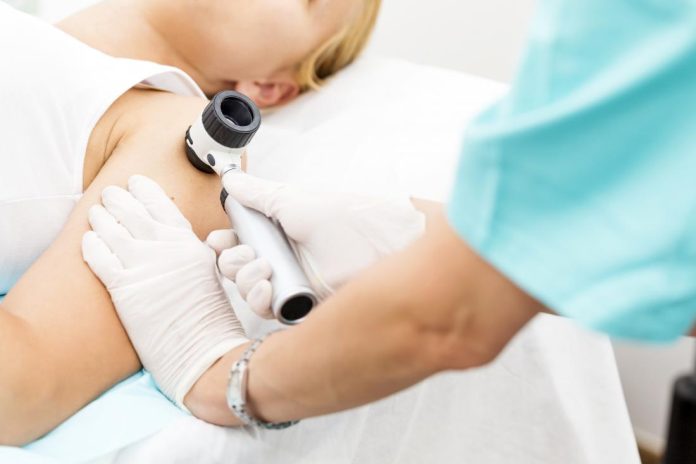Several studies suggest that there is a high comorbidity of psychiatric complications with pemphigus. In one study, the prevalence of psychiatric problems among the sample population was almost 63 percent. In both genders, symptoms of paranoia were the most common (45 percent in female and 60 percent in male). Phobia, however, was the least prevalent. The higher the educational attainment, the less likely there was to be psychiatric disorders. In another study, almost 3/4 of 157 pemphigus patients sampled were found to exhibit possible cases of mental illness.
In another study, psychiatric morbidity rates were found to be 40 percent by GHQ-12 and 26 percent by ICD-10. According to this latter measure, 16 percent had adjustment disorder, 8 percent had a depressive episode and 2 percent had acute or transient psychosis. This comorbidity was similar to that of the psoriasis group, at 46.7 percent by the GHQ-12 and 36.7 percent by the ICD-10. The ICD-10 diagnoses included 13.3 percent with adjustment disorder, 10 percent with depressive episode, 6.6 percent with alcohol dependence, 3.3 percent with paranoid schizophrenia and 3.3 percent with delusional disorder plus severe depressive episode with psychotic symptoms.
Indeed, in general, there is a very high comorbidity of psychiatric symptoms in patients with dermatological problems:
“Our findings are approximately consistent with the outcome of earlier studies of the prevalence of psychiatric comorbidity in dermatological patients. These studies have been carried out in diverse geographical areas. Hughes et al.[3] studied 196 dermatological outpatients and 40 inpatients, and reported that 30% of outpatients and 60% of inpatients scored above the threshold score on the GHQ-30. Wessely and Lewis[19] studied 160 new attendees of adult age at a dermatology outpatient clinic. The prevalence of psychiatric comorbidity was evaluated both by a questionnaire and an interview, and was found to be 42.7% defining cases by the GHQ-12 and, similarly, 40.2% defining cases by the Clinical Interview Schedule. Johnson and Mostaghimi[4] studied 132 consecutive patients attending the dermatological clinic at the Port Moresby General Hospital in Papua New Guinea. Subjects were screened with the Harding Self Rating Questionnaire, and those scoring above a threshold were examined by a psychiatrist. A very high comorbidity between dermatological diseases and psychiatric disorders was reported, as 71.6% of the female patients and 69.2% of male patients were diagnosed as having a psychiatric disorder according to International Classification of Diseases version 9 criteria, in most cases anxiety neurosis or neurotic depression. Aktan et al.[20] studied a sample of 256 outpatients in Turkey. The overall prevalence of psychiatric comorbidity was 41% defining cases by the GHQ-12 and 33.4% defining cases by the Structured Clinical Interview for DSM-IV Axis I Disorder SCID-I. Most identified cases were affected by a depressive disorder, an anxiety disorder or a somatoform disorder.”








